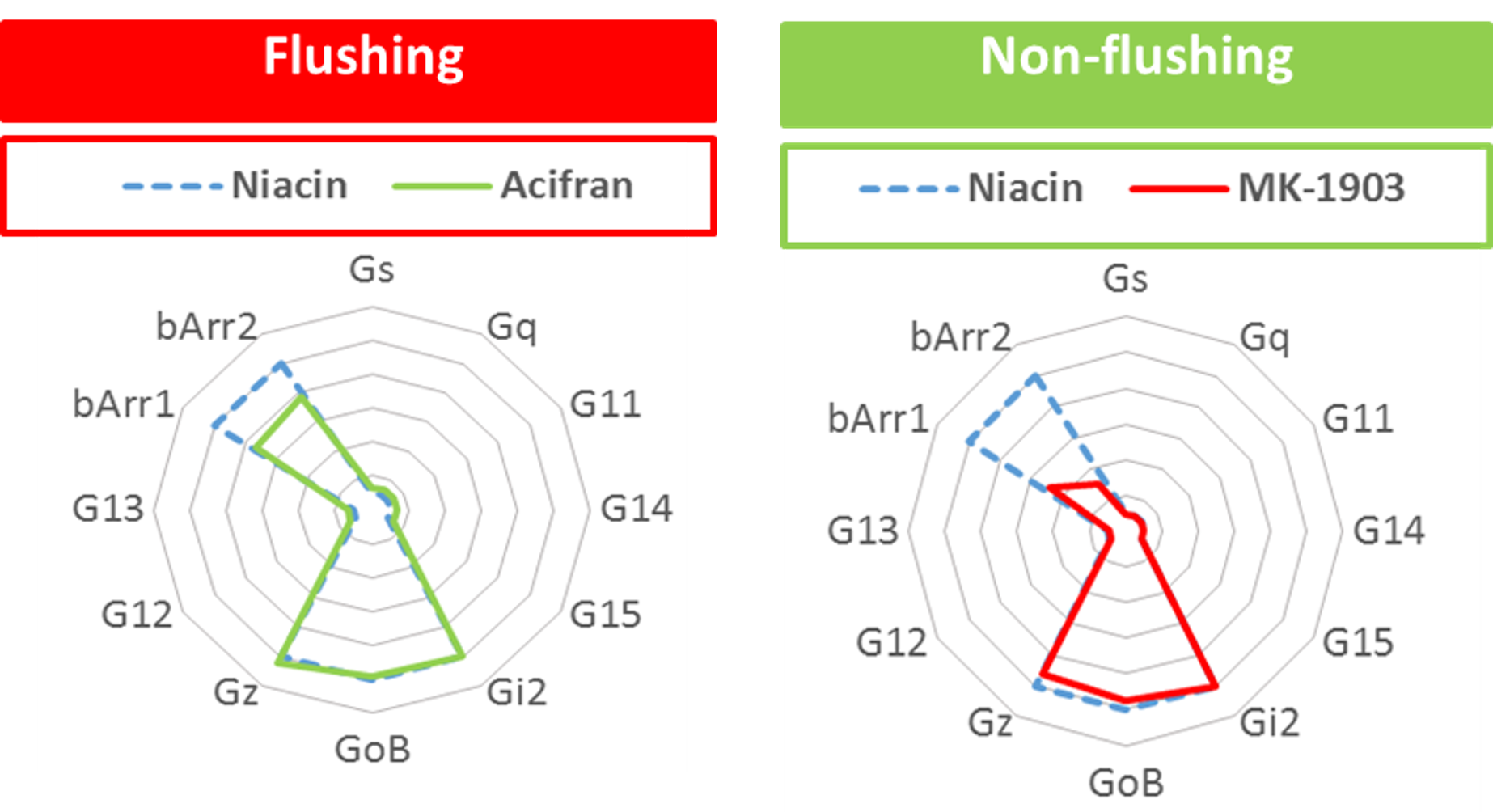GPCR signaling profiles translatable to clinical outcomes
GPR109a profiling: case study
GPR109a is a receptor that’s been shown to display numerous beneficial effects once engaged, including anti-lipolytic, anti-inflammatory and anti-atherogenic effects. The receptor can couple not only to G proteins but also β Arrestins. However, for a considerable proportion of individuals, use of Niacin leads to adverse effects (cutaneous inflammation event referred to as “Flushing“).
It was shown that GPR109a’s beneficial effects were mediated by the G protein signaling arm of the receptor signaling while the side effects were mediated by the β Arrestin arm. Based on these findings, tremendous efforts by pharma companies are aimed at developing compounds that would engage the G protein signaling arm of the receptor and avoid activation of the β Arrestin signaling cascade.
To prove this correlation between ligand’s signaling signature and clinical outcome, we present below the comparison of different ligands. The compound developed by Merck, MK-1903 is known to evoke minimal flushing side effect, this compound indeed did not recruit the β Arrestin arm (figure below).
Hence, ligand profiling early during the drug discovery process can be valuable in identifying / designing the right therapeutic (small molecules and biologics), with potentially optimal therapeutic effects, minimizing the risk of attrition during clinical trials.
